This article was co-authored by Clinton M. Sandvick, JD, PhD. Clinton M. Sandvick worked as a civil litigator in California for over 7 years. He received his JD from the University of Wisconsin-Madison in 1998 and his PhD in American History from the University of Oregon in 2013.
There are 12 references cited in this article, which can be found at the bottom of the page.
This article has been viewed 31,926 times.
After filing an appellate brief or a motion, you may have the opportunity to present oral argument to the court. Whether you are speaking in front of the Supreme Court or in law school Moot Court, oral advocacy is an important part of convincing judges to decide in your favor. You will need to extensively prepare, understanding your case inside-and-out, and present arguments in a clear and convincing manner.
Steps
Preparing for Oral Argument
-
1Understand the purpose of oral argument. After submitting a brief or motion to the court, you have the option to present oral argument. The purpose of oral argument is to help clarify the issues for judges and address any concerns that they have.[1]
- You should think about oral argument as a dialogue that you will be having with the judges. The judges are not the enemy. Judges may ask hard questions because those are the issues they are grappling with. Not every hard question is an attempt to trip you up.
- Oral argument is most associated with appeals. After a trial court renders a decision, the losing party can appeal. This person is called the “appellant.” The other party is the “appellee.” Appeals are usually heard in front of a panel of at least three judges.
- Trial courts will also hold oral arguments for critical motions (such as a motion for summary judgment) or on a motion for a new trial.
-
2Find the court’s list of rules. Some appellate courts will list rules that attorneys must follow during oral arguments. You should look for these rules on the court’s website. If you have a question, call the court clerk and be sure to ask.
- If you are preparing for a Moot Court competition, then you will definitely be given a list of rules.
- Always follow the rules. If anything in the rules conflicts with anything you read here, follow the court’s rules instead.
Advertisement -
3Re-read the briefs and the record. You need to read all briefs—not just the ones you wrote. Going into oral argument, you need to know the legal issues in the case and any disagreements the two parties have about what the law means.
- You also need to know the facts inside and out. Even though you will not present a summary of the facts at oral argument, you should anticipate being asked any question about the record. Take out the record (the transcripts, trial motions, jury instructions, etc.) and become as familiar with it as you can.[2]
-
4Re-read all legal authority cited by the parties. In the briefs, you cited various court opinions, statutes, treatises, and law review articles as legal authority. You need to re-read all of this material so that you can discuss it and answer questions judges may have about how it relates to your case.
- Also re-read all of the authority cited by the other party. You will need to know their cases as well as they do.
-
5Outline your argument. You should create a short outline of your argument. Ideally, the argument will follow the order of the arguments in your brief. However, you may have sandwiched your weakest argument in the brief between your stronger ones. Because time is limited in oral argument, you may want to reorder your arguments from strongest to weakest, so that you will be assured of discussing your strongest arguments first.
- You cannot introduce new arguments into oral argument. If you forgot to make an argument in the briefs, you cannot spring it on the other side during oral argument. The purpose of oral argument is to address the arguments actually made in the briefs.
- Write your outline on the inside of a manila folder that you take up to the podium with you. Include the legal argument: “The conviction should be reversed because the lineup was unduly prejudicial.” Then include a few bullet points of either relevant facts or legal rules.
- For example, relevant facts with respect to a lineup could be that all of the other fillers in the lineup were of a different race or much taller than you.
- You may also want to write down the name of a legal case that was similar to yours that you are citing for legal authority that filling a lineup with people of a different race is unduly prejudicial.
- If you are lost as to what to put in your outline, then look at your brief. You already included an outline of your legal arguments in the Table of Contents to your brief.
- The amount of detail you include in your outline will depend on how well you know your argument. Write out topic sentences for each legal argument you make. Then practice making your argument. If you don’t know what to say in support of your argument, then you need to revisit your brief, the record, and the legal authority you cited.
-
6Create a “cheat sheet” of important facts and legal authority. If you forget the name of a case when delivering your argument, you will want to have a “cheat sheet” that lists the names of cases and then a few relevant facts. This sheet can jog your memory.
- You can put the cheat sheet on the other half of the manila folder, across from your outline. This way, you can just glance down at the podium if you are asked a question and need help remembering the case.
- Write the case name or statute and then a relevant fact or two to jog your memory. Also write down what point of law you cited it for.
-
7Draft a list of questions and answers. Pretend that you are a judge and come up with questions. Having re-read the briefs, you should be well aware of the weaknesses of your case. You can write each question on a separate index card. In this way, you can practice whenever you have a spare moment by shuffling the cards and then answering each question that you draw from the deck.
- You should also write down answers to the questions.[3] Strive to keep answers brief—preferably one or two sentences. A short answer is easier to remember and also saves you time that can be spent talking about all of the issues.
- Compare these two answers. Suppose you are arguing that a lineup was unduly prejudicial and that the eye-witnesses identification should have been thrown out. The government argues that the witness never identified the defendant so the issue is moot. A judge asks you about this: “How can you say the identification was unconstitutional when there wasn’t really an identification? The witness never said, ‘He’s the one.’”
- Answer One: “Well, your honor, it may be technically true that the government didn’t get an eyewitness identification. But I don’t think we need to rely on formalities. It doesn’t really matter what label we use. It’s probably better to look and see what the witness said. And the witness said, ‘I think it looks like him.’ And I would argue that’s close enough to an identification, especially when the government presented her as a witness in its case.”
- Answer Two: “It may not have been technically an identification, but the government treated it as one. If they want to offer it to the jury as an identification, then they need to follow the Constitution when they get it.”
- Work hard to refine your answers. Revisit your answers repeatedly and try phrasing the differently.
-
8Practice. You should give your list of questions to a friend and do several practice runs. Have the friend ask you the questions and work at honing your answers so that they are sharp, short, and persuasive.
- Also work on transitioning between arguments. You may have three issues you want to raise in oral argument. Preferably, you would present them in a one, two, three order. However, the judges may immediately want to take you to issue three. You need to practice transitioning from three to one.
- Practice every combination. Start with the second argument and work on how to transition to your first argument.
- Also prepare for a “cold bench.” When judges ask a lot of questions, it is called a “hot bench” or “hot panel.” A “cold bench” occurs when no judge has a question and you must simply deliver your argument uninterrupted. You should also practice delivering an argument to a cold bench.[4]
-
9Listen to sample arguments. Many courts now put their oral arguments on websites or stream them live. If you cannot visit the court to observe an oral argument in person, then you should listen to several recorded arguments to get a feel for the rhythm of oral argument and how attorneys answer questions.
- Find oral arguments for the court you will be arguing in. Supreme Court arguments may be great, but they may not be anything like an argument in your court.
-
10Dress appropriately. You need to be dressed in business attire when presenting an oral argument. You should pick conservative and gender-neutral styles and colors. Dark colors, such as navy blue or gray, are best.[5]
- Women should wear a two piece suit: a pant suit or a skirt suit. No dresses.
- Men should wear a business suit with matching jacket and pants. Leave “fun” ties at home. Instead, opt for a solid tie in blue or red.
Delivering the Oral Argument
-
1Turn off your cell phone. Before entering the court room, you should turn off all cellular phones and pagers, or set them to silent mode.[6] Make sure any electronic device that could make a “beep” is turned off.
- Some people have watches that beep. They sometimes forget this, only to have the watch beep while they are at the podium.
-
2Find where you are supposed to sit. Each party will have a separate table or different end of a bench to sit at.[7] You should understand where you are supposed to place yourself.
- Facing the judges, the person bringing the appeal typically sits on the left, while the appellee sits to the right.[8]
- If you don’t know where you are supposed to go, try to sit in on at least one day of oral argument to watch what counsel do.
-
3Speak confidently into the microphone. Many courtrooms have microphones now (although not all will). You should speak directly into the microphone using a comfortable speaking style. Do not feel as if you have to project your voice, but speak loud enough so that the court can hear you.
- Do not apologize for being nervous. Also, try to speak at a normal speed no matter how nervous you are.[9]
- Avoid saying “Umm….” or “Ah…” If you need a second to think or look at your cheat sheet, then take a breath instead of using filler words or sounds.
-
4Introduce yourself to the court. Begin your argument by saying, “May it please the court, my name is [insert your name] and I represent [the name of your client].”[10]
- If you are representing yourself pro se, you can state, “May it please the court, my name is [insert your name] and I am representing myself in this action.”
- Always refer to judges as “Your Honor” and to the court as a whole as “the court.”[11]
- You do not have to introduce yourself individually to each judge.[12] Instead, introduce yourself to the judges collectively.
-
5Reserve time, if you are the appellant. If you are the appellant (the party bringing the appeal), then you may reserve some of your time to use for rebuttal.[13] Some courts will require you to tell them ahead of argument how you will divide your time. Other courts will request that you tell them at the beginning of your argument.
- If you are given 20 minutes, then you should reserve at least five for rebuttal.
-
6State your requested relief and the grounds. After introducing yourself, you should tell the court what relief you are requesting and why. Create a roadmap by laying out your arguments, in the order you will present them. Also be sure to tell the court what you want it to do.[14]
- For example, if you are asking for a criminal defendant’s conviction to be overturned, then you would say, “We ask the court to overturn Mr. Smith’s conviction for three reasons. First, the police lineup was unduly suggestive and violated Mr. Smith’s Due Process rights. Second, the government’s introduction of guilt-by-association evidence prejudiced Mr. Smith. And third, the court’s refusal to allow Mr. Smith to present an alibi witness denied him a fair trial.”
- Realize that the judges can cut you off with a question at any time. If they are particularly interested in an issue, they may even cut you off before you finish reciting your roadmap.
-
7Avoid a lengthy recitation of facts. The judges have already read the briefs and are familiar with the facts of the case. You should not launch into a discussion of the facts unless a judge asks for clarification of the facts.[15]
- Refer to facts confidently, as if you assume the judges know what you are talking about. You don’t have to say, “As I’m sure the court knows, the defendant was arrested on a Friday but not arraigned until Monday.” Simply state facts and tie them to your argument: “Because my client had to wait two days to be arraigned, he couldn’t meet with his lawyer.”
-
8Look at the judges. You should make eye contact. Look from judge to judge as you make your argument. When answering a judge’s question, you should look at the judge who asked it.
- Do not address your argument to opposing counsel.[16]
-
9Stand still. You should avoid being theatrical when delivering an oral argument. Instead, stand still with your hands at your side or resting on the podium in front of you. You should not pace back and forth, the way a lawyer sometimes does in a Hollywood movie when delivering a closing argument to a jury.[17]
- Don’t waive your arms around or punctuate thoughts by pointing fingers or other gestures.
- Also avoid bringing a lot of material up to the podium with you. You won’t have time to riffle through binders full of paper or thumb through your brief. If you need help remembering a fact or case name, refer to your cheat sheet in front of you on the podium.
-
10Try to avoid using exhibits. An oral argument is not a presentation to a jury. Accordingly, you should not rely on exhibits during your argument. If you do need an exhibit to help clarify something, then make sure the exhibit is no larger than an 8.5x11” piece of paper.[18] Preferably, the exhibit should have been included in your brief as an appendix. You could then simply refer to the appendix in your argument.
- Remember that you cannot introduce new evidence during the oral argument.[19] So scrutinize any exhibit you think you must use to be sure it does not contain new facts or interpretations not made in the briefs.
-
11Raise all of your arguments. If you are the appellant, then you should raise all of your arguments in your opening argument. Do not save arguments to introduce for the first time on rebuttal.[20]
- Mention an argument in a single sentence if you have to. Just be sure to raise all of your issues in the opening argument.
Answering Questions
-
1Understand the question before answering. You don’t want to waste time by answering a question that hasn’t been asked. Listen closely to the question.[21]
-
2Answer the question asked. You should not dodge a question because you don’t have a good answer. Instead, directly answer the question asked. If it is a question you have anticipated, then you should have a decent answer.
- If the judge asks a “yes or no” question, then answer “yes or no.” After doing so, attempt to clarify briefly, to provide context to your answer.[24] For example, if the judge asks, “Didn’t you admit that you were guilty to the prosecutor?” you can say, “I did. But as explained in my brief, I was under duress because I hadn’t seen any of my family in three days and was worried.”
- Answering questions directly signals to the judges that you are honest and confident in your argument.[25]
- Sometimes judges will make arguments neither party made. Although you are prohibited from introducing arguments at oral argument that you didn’t make in the briefs, you must always answer the judge’s question. If you have to speculate to answer the question, then speculate. Say, “That wasn’t in the record, Your Honor. But if I have to speculate, then I would say….”
-
3Correct inaccuracies and Mis-impressins. If the judge’s has the facts wrong, then you should gently correct the error.[26]
- You can say, “Actually, Your Honor, the record says….” And then provide the correct information.
- If the judge persists, you can simply say, “I disagree with that” and try to move on. You will not win an argument with a judge. However, you do not want to waste too much time haggling over details. Refer the judges to your brief, which should have the correct factual information.
-
4Don’t talk over the judge. When a judge interrupts you to ask a question, you should immediately stop talking.[27] The judge may be particularly anxious to ask you a question, or she may not like your argument. Do not get flustered or upset, especially as you can’t know why you were interrupted.
- If the judge interrupted an important point you wanted to make, then try to weave it back into one of your answers after directly answering the question the judge has interrupted you to ask.[28]
-
5Offer supplemental briefing. Sometimes judges will identify legal issues that neither attorney has. In this case, you may be asked a question you have never thought of. Rather than try to come up with an answer on the spot, you can offer to provide supplemental briefing.[29]
- The court may not allow it, but it is a good idea to offer, especially if you think the issue is critical to the case. However, supplemental briefing must be for an issue raised by the judges. It is not another attempt for you to write a compelling brief or make arguments you should have made in the briefing.
Rebutting the Appellee’s Arguments
-
1Listen closely. The appellee may simply repeat what is in their brief. Or, the appellee may respond creatively to your arguments. Listen closely to hear what the appellee is really saying. In rebuttal, you need to respond to the arguments made.
-
2List the appellee’s strongest arguments. Take out a blank piece of paper and draw a line down the center. On the left-hand side, write out arguments the appellee makes that seem very strong. Also, write down any misrepresentations the appellee makes.
- Don’t write out every argument the appellee makes. You won’t have time for that. Instead, focus on arguments your gut tells you that you must respond to.
-
3Jot down counterarguments. As you listen to the appellee, write out counterpoints you want to make on the right-hand side of the paper. Write the counterpoints beside the corresponding argument.
- In a few words, write down what you want to say. If the appellee quotes a wrong number, write down the correct number. If the appellee mistakes the holding of a case, note the correct holding.
-
4Rank the arguments in importance. As the appellee wraps up their argument, quickly rank the counterarguments, from most pressing to least. You may only have five minutes or so of rebuttal, and some of that time will be eaten up answering judge’s questions.
- By ranking the arguments, you can be sure to address the most important in what little time you have remaining.
-
5Summarize the argument, then rebut. Remind the judges of what the appellee argued. Then counter the argument or clarify it.
- For example: “First, I want to clarify that my client spent five nights in jail, not two, as you just heard.”
- Or: “The state claims that the Supreme Court doesn’t require Miranda warnings each new time the police interrogate a suspect. But that’s not what the Court actually held. Instead….”
-
6Close by repeating your request for relief. You may make it through the rebuttal with time to spare, or you may run out of time halfway through a sentence. If the latter, complete your sentence but stop making arguments.
- If your time runs out on you, then say, “I see my time has run out. May I conclude briefly?” If you are granted time, then simply state your requested relief. Do not continue making substantive argument as part of your brief conclusion.
Warnings
- In Moot Court competitions especially, judges may try to bully you to test how well you handle stress. Always remain calm and don’t become snappish. Most Moot Court judges are alumni who are playing a role. They are very friendly outside the competition.⧼thumbs_response⧽
- Always consult the rules of your local court and jurisdiction.⧼thumbs_response⧽
References
- ↑ https://williamscollegelawsocietydotcom.files.wordpress.com/2011/10/performing-your-first-appellate-oral-argument.pdf
- ↑ http://www.law.georgetown.edu/academics/academic-programs/legal-writing-scholarship/writing-center/upload/May-It-Please-the-Court-Dilauro.pdf
- ↑ http://www.law.uchicago.edu/files/files/Oral%20Advocacy%20Tips.pdf
- ↑ https://lawyerist.com/40693/how-to-prepare-for-oral-argument/
- ↑ https://www.ca7.uscourts.gov/forms/SpecNoteCnsl_reformatted.pdf
- ↑ https://www.ca7.uscourts.gov/forms/SpecNoteCnsl_reformatted.pdf
- ↑ https://www.ca7.uscourts.gov/forms/SpecNoteCnsl_reformatted.pdf
- ↑ https://www.ca7.uscourts.gov/forms/SpecNoteCnsl_reformatted.pdf
- ↑ http://www.bestlawyers.com/Article/effective-oral-argument/26/
- ↑ http://www.bestlawyers.com/Article/effective-oral-argument/26/
- ↑ http://www.bestlawyers.com/Article/effective-oral-argument/26/
- ↑ http://www.courts.alaska.gov/shc/appeals/appealsoral.htm
- ↑ http://www.courts.alaska.gov/shc/appeals/appealsoral.htm
- ↑ https://lawyerist.com/40693/how-to-prepare-for-oral-argument/
- ↑ https://www.ca7.uscourts.gov/forms/SpecNoteCnsl_reformatted.pdf
- ↑ http://www.bestlawyers.com/Article/effective-oral-argument/26/
- ↑ http://www.law.uchicago.edu/files/files/Oral%20Advocacy%20Tips.pdf
- ↑ http://www.in.gov/judiciary/supreme/2331.htm
- ↑ http://www.in.gov/judiciary/supreme/2331.htm
- ↑ https://www.law.cornell.edu/rules/supct/rule_28
- ↑ http://www.law.georgetown.edu/academics/academic-programs/legal-writing-scholarship/writing-center/upload/May-It-Please-the-Court-Dilauro.pdf
- ↑ http://www.law.uchicago.edu/files/files/Oral%20Advocacy%20Tips.pdf
- ↑ http://www.law.georgetown.edu/academics/academic-programs/legal-writing-scholarship/writing-center/upload/May-It-Please-the-Court-Dilauro.pdf
- ↑ http://www.law.georgetown.edu/academics/academic-programs/legal-writing-scholarship/writing-center/upload/May-It-Please-the-Court-Dilauro.pdf
- ↑ http://www.law.georgetown.edu/academics/academic-programs/legal-writing-scholarship/writing-center/upload/May-It-Please-the-Court-Dilauro.pdf
- ↑ http://www.law.georgetown.edu/academics/academic-programs/legal-writing-scholarship/writing-center/upload/May-It-Please-the-Court-Dilauro.pdf
- ↑ http://www.law.uchicago.edu/files/files/Oral%20Advocacy%20Tips.pdf
- ↑ http://www.law.uchicago.edu/files/files/Oral%20Advocacy%20Tips.pdf
- ↑ http://www.bestlawyers.com/Article/effective-oral-argument/26/




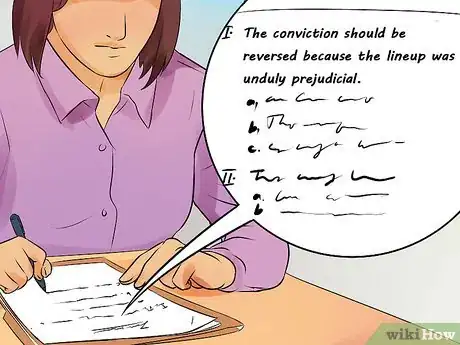
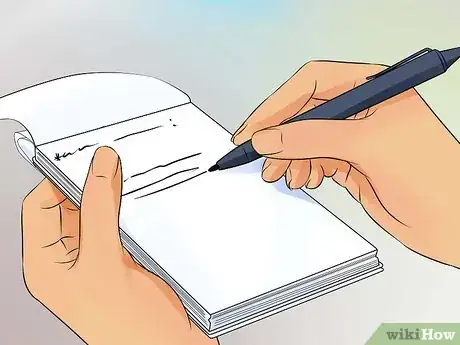
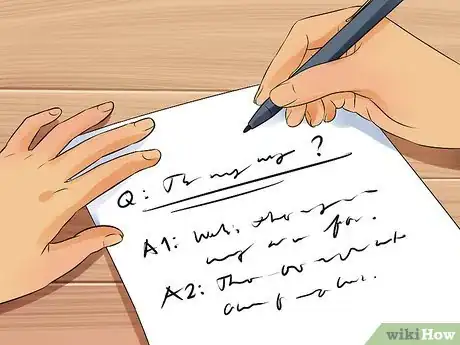






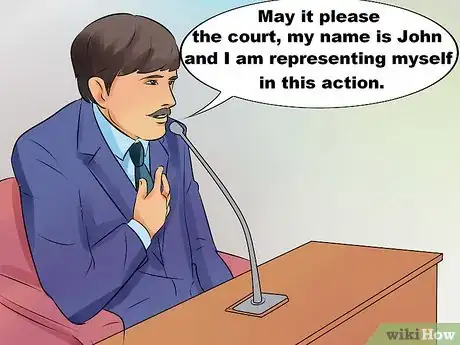


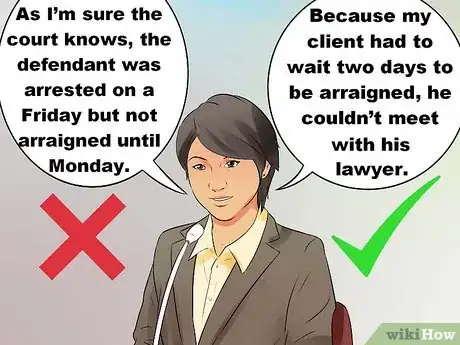
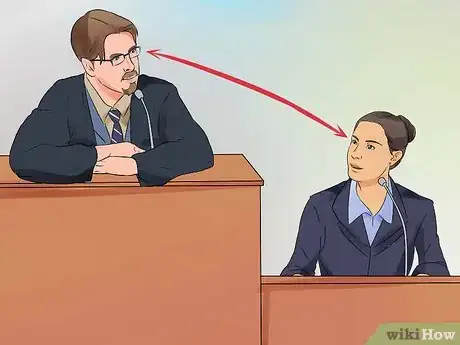




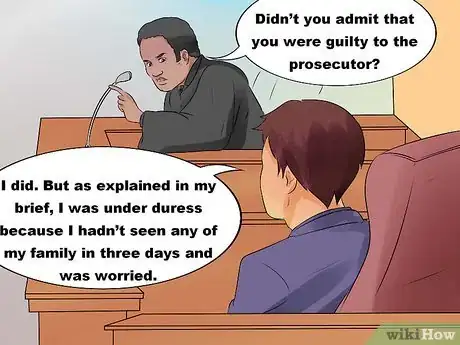
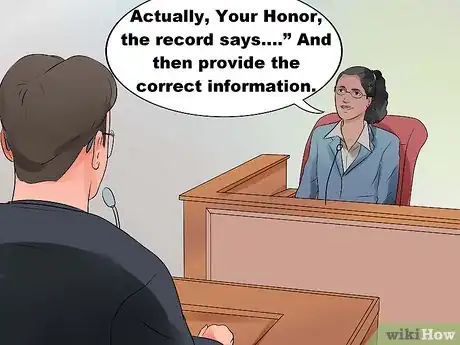

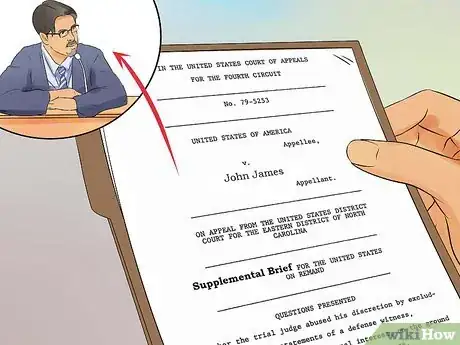
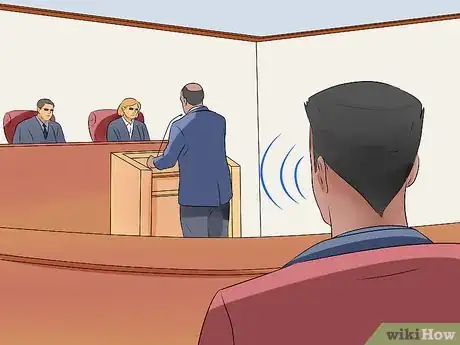
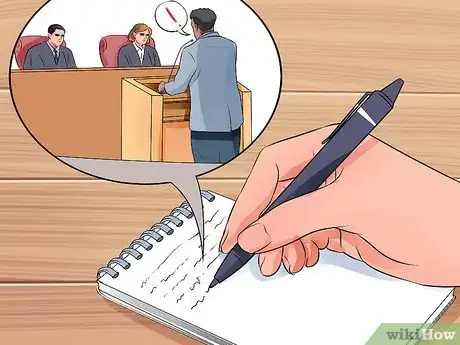
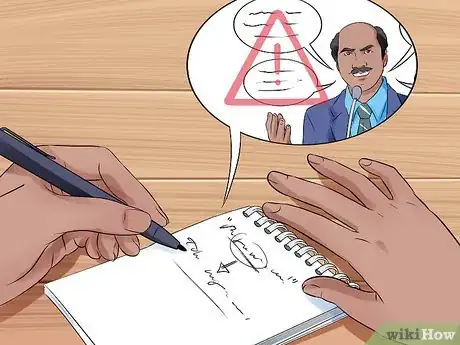
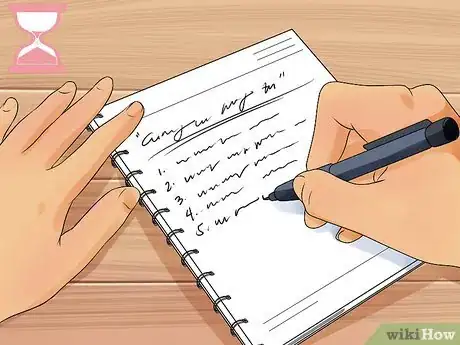

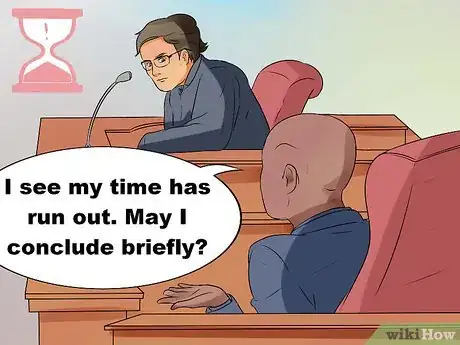




-Step-13-Version-3.webp)
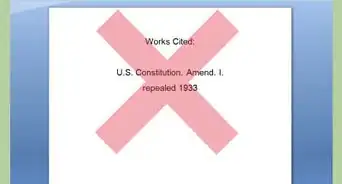



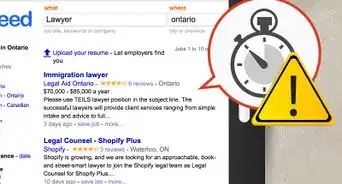

-Step-13.webp)

-Step-9-Version-2.webp)














































